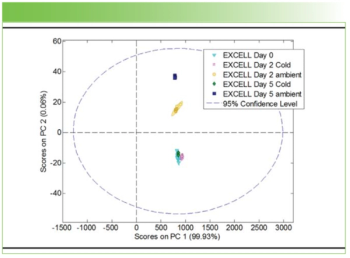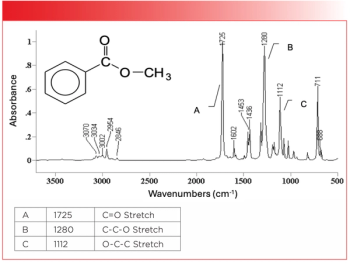
New ATR FT-IR Mapping Method Helps Identify Ingredients in Herbal Medicines
A new study demonstrates the feasibility of using attenuated total reflection Fourier transform infrared (ATR FT-IR) mapping for the identification of the prescribed and abnormal ingredients of herbal powder preparations (HPPs) for medicines.
A new method of identifying ingredients in herbal powder preparations (HPPs) has been developed by researchers from the Beijing University of Chinese Medicine (1). The traditional practice of blending the powder of two or more ingredients for use in traditional medicine is widespread, but it can be difficult to ensure the safety and efficacy of HPPs. The new method uses attenuated total reflection Fourier transform infrared spectroscopy (ATR FT-IR) imaging or mapping to measure particles of different ingredients in an HPP sample individually. This means that the IR spectral identification method can be more specific and sensitive than bulk sampling methods.
ATR FT-IR mapping is a spectroscopic technique used to identify the individual particles of different ingredients in a sample. A beam of IR light is directed through a crystal and onto the sample surface, generating an evanescent wave that interacts with the sample. The resulting absorption spectrum provides information about the chemical composition of the particles. ATR FT-IR mapping can be used for the objective and simultaneous identification of the prescribed and abnormal ingredients in herbal powder preparations.
The ATR FT-IR mapping method allows the characteristic particles of each ingredient to be identified objectively by comparing microscopic ATR FT-IR spectra against reference spectra based on correlation coefficients. The new technique is particularly useful because the ATR FT-IR imaging or mapping tests of HPPs do not require any separation preprocess, which means that multiple organic and inorganic ingredients can be recognized by a single identification procedure simultaneously, rather than by different separation and identification procedures.
To demonstrate the feasibility of the ATR FT-IR microspectroscopic identification method, the researchers used the method to identify three prescribed ingredients and two abnormal ingredients in oral ulcer pulvis, a classic HPP for oral ulcer in traditional Chinese medicine. The results of the research show that the ATR FT-IR mapping method is a promising technique for the objective and simultaneous identification of the prescribed and abnormal ingredients of HPPs.
The new method of identifying the ingredients in herbal medicine has significant implications for traditional medicine practitioners and researchers alike. It offers an efficient and cost-effective way of confirming the safety and efficacy of HPPs, which could lead to greater acceptance of traditional medicine as a viable form of healthcare. The research was published in the journal Applied Spectroscopy, and the study was led by Ling Dong and Jianbo Chen (1).
Reference
(1) Zhong, L.; Xu, M.; Sun, S.; Zhou, Q.; Dong, L.; Chen, J.Attenuated Total Reflection Fourier Transform Infrared Mapping for the Identification of the Prescribed and Abnormal Ingredients of Herbal Powder Preparations. Appl. Spectrosc. 2023, ASAP. DOI:
Newsletter
Get essential updates on the latest spectroscopy technologies, regulatory standards, and best practices—subscribe today to Spectroscopy.




